The New York motorcycle helmet law requires that all riders wear a helmet while operating a motorcycle anywhere in the state. In fact, New York was the first state in the nation to have a universal helmet law. Riding a motorcycle without a helmet makes you more vulnerable to serious head injuries in an accident and can affect your right to compensation in a personal injury claim.
If you were injured in a motorcycle accident because of someone else’s negligence, our experienced New York motorcycle accident lawyers are on your side. Call (716) 500-5678 or contact us online to schedule your free consultation.
Does New York Have a Helmet Law?
Under New York State law, helmets are required by all riders and passengers on motorcycles to be compliant with Section 571.218 of the federal motor vehicle safety rules. Unlike some other states, if an individual is operating or acting as a passenger on a motorcycle, there are no circumstances where they do not have to wear a helmet. The laws also require helmets to meet the standards outlined in Section 571.218 of federal motor vehicle safety rules. Some of these include:
- No rigid projections inside the helmet shell and none that protrude more than 0.2 inches from the outer helmet
- The DOT symbol must be located between one to three inches from the bottom of the helmet
- Peripheral vision clearance of at least 105 degrees
- A continuous protective curved surface
On certain smaller motorbikes, including motorized scooters, it is recommended to wear a helmet, but not required. This depends on the engine size and how fast the motor vehicle can go. If the scooter’s maximum speed is below 20 miles per hour, New York motorcycle helmet laws do not apply.
Additional Safety Requirements
In addition to the New York helmet law, motorcyclists must comply with the following safety requirements, which align with federal guidelines and sometimes exceed them:
- Adequate front and rear brakes that can control the motorcycle at all times.
- A bell, horn, or similar signaling device.
- Red to amber tail lights that remain lit while the motorcycle is in use.
- An approved white or yellow headlight that remains lit at all times while the motorcycle is in use and is visible for at least two hundred feet.
- If used in conjunction with headlights, reflectors that have polished silver glass-reflecting surfaces or surfaces that otherwise intensify the headlight.
- Reflector surfaces that are “substantially free” of rust, dirt, and other imperfections that could diminish their effectiveness.
- Handlebars and grips at or below the rider’s shoulders.
- Approved goggles or face shields worn at all times.
- Adjustable rear-view mirrors.
- Windscreens approved by the state commissioner, if used.
Law enforcement reserves the right to inspect motorcycles to ensure compliance with all safety laws. It is illegal in New York to sell helmets, goggles, or face shields that do not comply with federal and state regulations.
Legal Consequences of Not Wearing a Helmet
If you are caught violating the New York helmet law, the police may pull you over and issue a ticket. You could face a $100 fine, 30 days in jail, or both. There are no exceptions to New York’s universal helmet law.
Can I Still File a Claim For a Motorcycle Accident if I Wasn’t Wearing a Helmet?
Yes. You can file a personal injury claim if you are injured in a motorcycle crash because of someone else’s negligence, regardless of whether you were wearing a helmet. According to the CDC, motorcycle helmets are 37 percent effective at preventing deaths among riders and 69 percent effective at preventing head injuries. If you sustain a head injury in a motorcycle accident while not wearing a helmet, you may still be able to recover compensation, but the amount may be reduced.
How Will Not Wearing a Helmet Affect My Compensation?
New York’s comparative negligence law allows accident victims to recover damages in personal injury claims even if they are partly at fault for their injuries. However, their compensation is reduced proportionately to their degree of fault. For example, if you were 40 percent at fault for the accident and your damages were $1 million, your compensation would be reduced to $600,000.
The comparative negligence law can also affect your motorcycle accident compensation if your share of fault for causing the accident is zero. For instance, if your injuries were worse because you were not wearing a helmet, the insurance company blame you for violating the New York helmet law even though you did not cause the accident itself.
We are committed to helping you get the best result possible. Our knowledgeable New York catastrophic injury lawyers work with forensic and medical experts who can determine what effect, if any, your lack of a helmet had on your injuries. We may find that the helmet would not have made a difference or that the lack of a helmet played a less significant role in your injuries than the insurance company claims.
Rely on a Buffalo Attorney for Help Understanding Motorcycle Helmet Laws
When you are involved in a motorcycle collision, you will likely have numerous questions about what steps to take next. Let our team take the lead in helping you understand and protect your legal rights. For more information about the New York motorcycle helmet laws or other personal injury-related issues, reach out to Richmond Vona, LLC for a free consultation.



